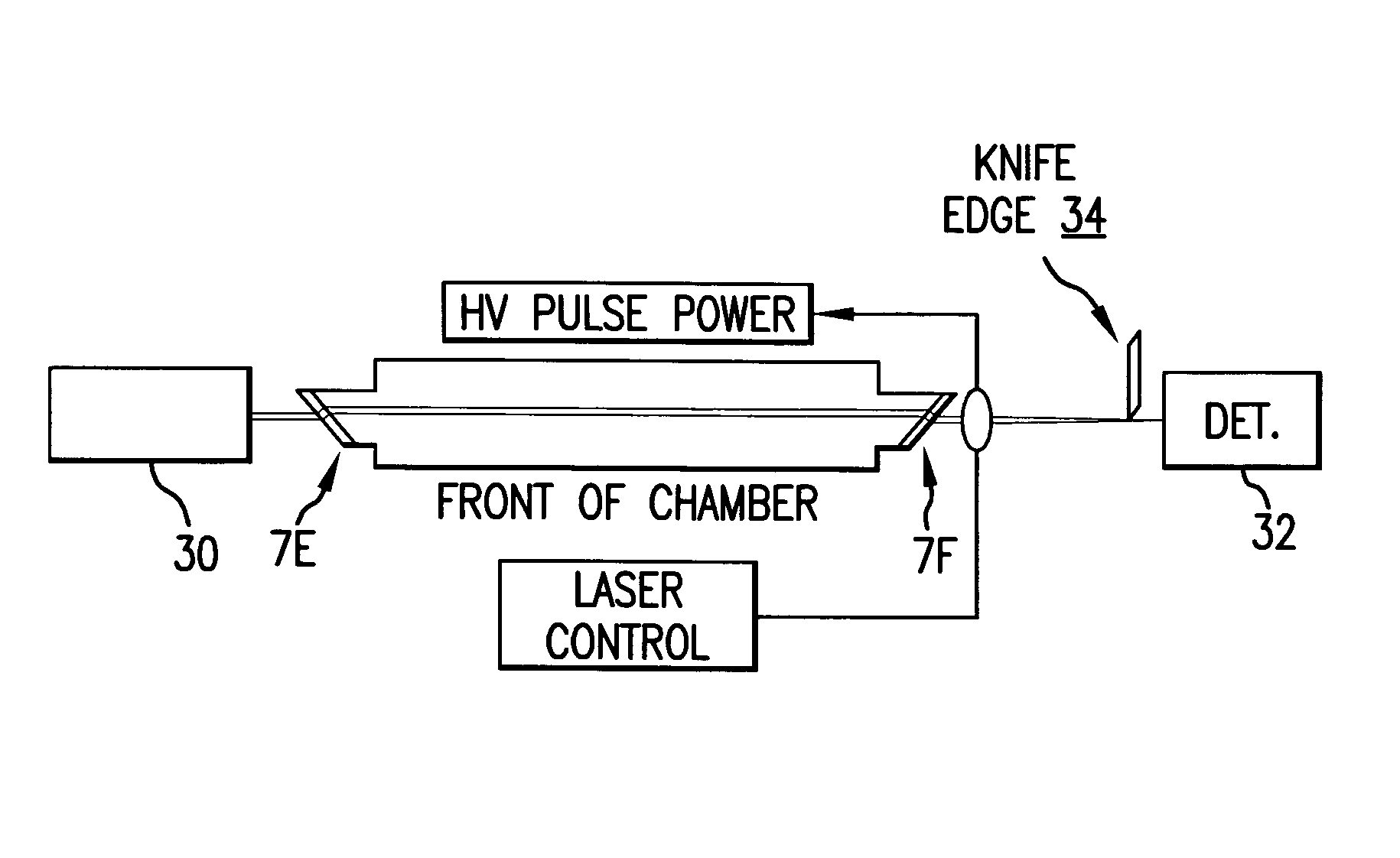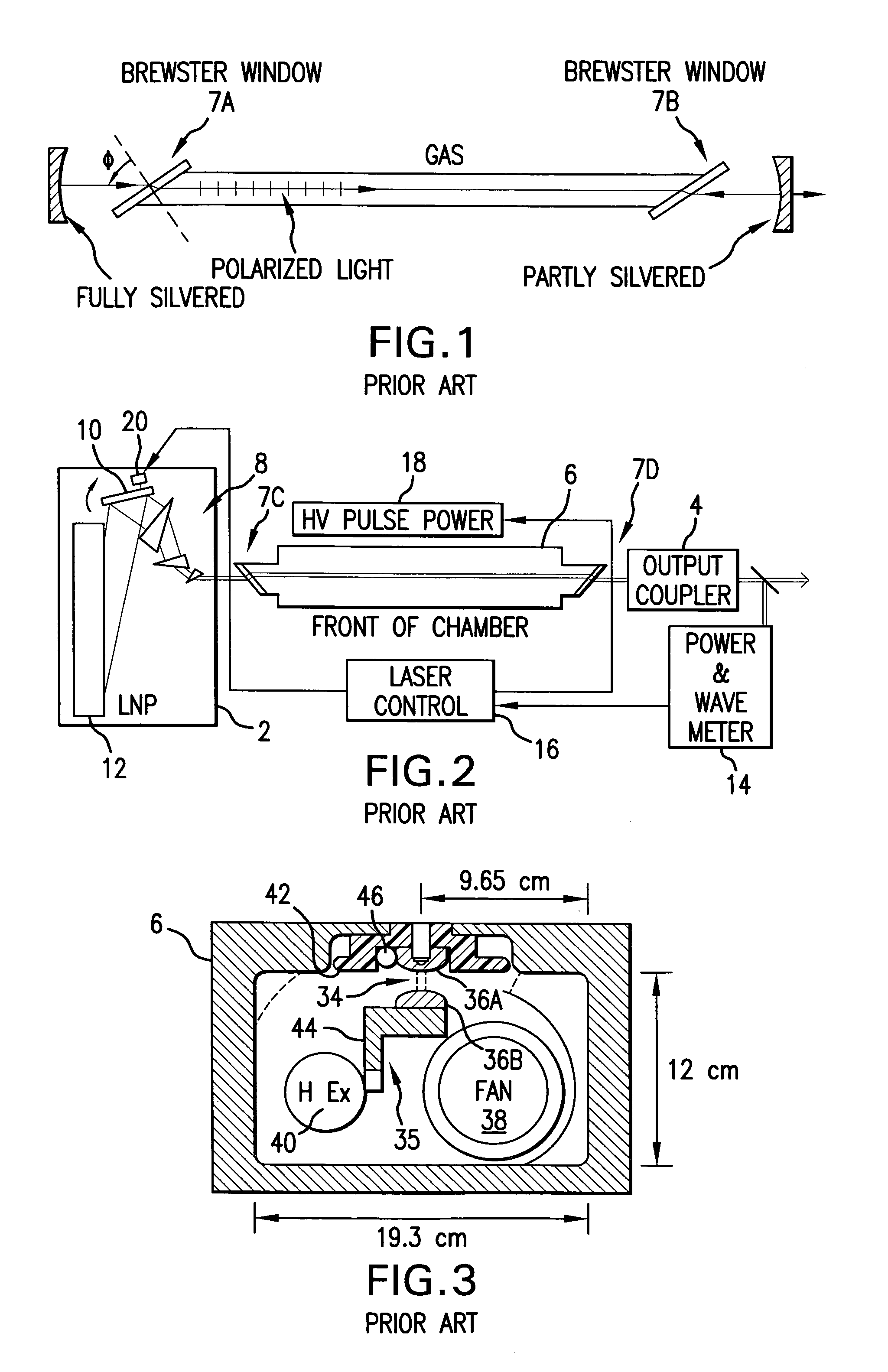Narrow band electric discharge gas laser having improved beam direction stability
a gas laser and beam direction technology, applied in the direction of instruments, photomechanical equipment, active medium materials, etc., can solve the problems of affecting the laser gain and energy stability, affecting the alignment of front and rear laser optics, and affecting the stability of the beam direction, so as to reduce the fluctuation of the laser beam direction, improve the wavelength stability, and improve the effect of wavelength stability
- Summary
- Abstract
- Description
- Claims
- Application Information
AI Technical Summary
Benefits of technology
Problems solved by technology
Method used
Image
Examples
Embodiment Construction
Knife Edge Experiments
[0026]Applicant has conducted extensive experiments to determine the causes and effects of beam bending within the laser gas of the type of electric discharge lasers described in FIG. 2. A slightly simplified version of his basic experimental set up is shown in FIG. 4. The output coupler and the LNP were removed and replaced with a transilluminating diode laser (Model No. 31-0334 by Coherent, Inc. with offices in Santa Clara, Calif.) 30, lens 31, a diode detector (Model No. DET 200 by ThorLabs, Inc. with offices in Newton, N.J.) 32 and a knife edge 34 which cut about 50 percent off from one side of the laser beam all as shown in FIG. 3. Diode laser 30 is a small inexpensive laser producing a continuous visible light, red beam at a wavelength of 635 nm. Any bending of the beam shows up as a change in the intensity of the light from laser 30 measured by detector 32. During a set of tests, the laser was discharged and the fan was operated at a normal speed of abou...
PUM
 Login to View More
Login to View More Abstract
Description
Claims
Application Information
 Login to View More
Login to View More - R&D
- Intellectual Property
- Life Sciences
- Materials
- Tech Scout
- Unparalleled Data Quality
- Higher Quality Content
- 60% Fewer Hallucinations
Browse by: Latest US Patents, China's latest patents, Technical Efficacy Thesaurus, Application Domain, Technology Topic, Popular Technical Reports.
© 2025 PatSnap. All rights reserved.Legal|Privacy policy|Modern Slavery Act Transparency Statement|Sitemap|About US| Contact US: help@patsnap.com



